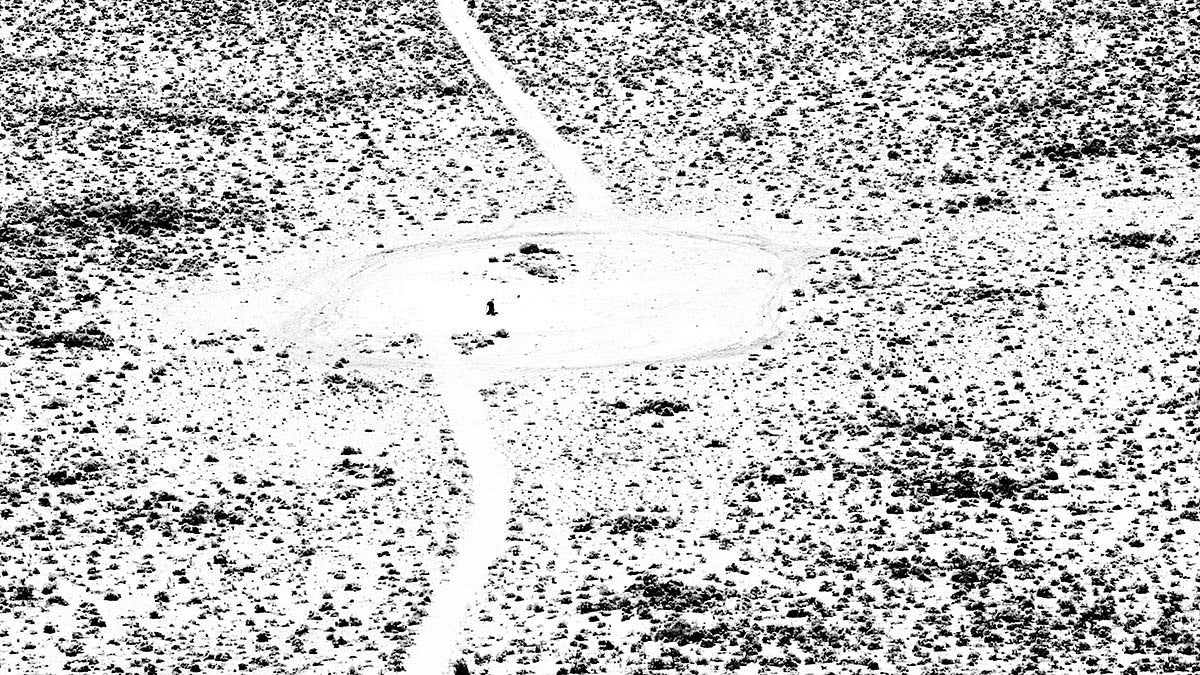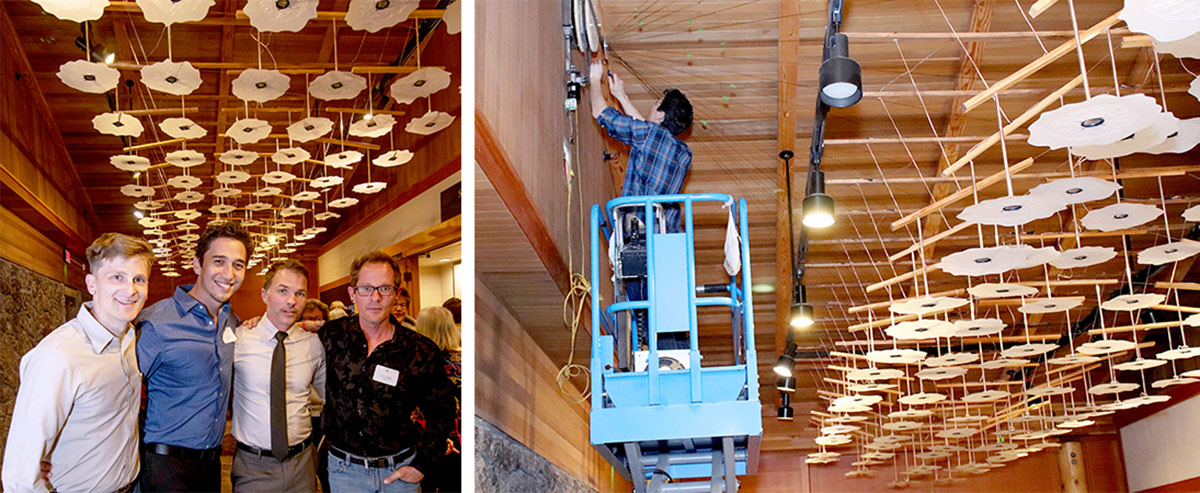
Harmonic Laboratory’s kinetic 32-foot sculpture, a commission for the High Desert Museum exhibition Desert Reflections: Water Shapes the West, was a year in the making.
Last spring, High Desert Museum sent Harmonic Laboratory—the arts and technology collective including School of Art + Design Instructor John Park and Info Tech Consultant Jeremy Schropp as well School of Music and Dance Associate Professor Brad Garner and Audio Production Instructor Jon Bellona—into Oregon’s high desert to explore the role of water in the region.
Related Links:
Harmonic Laboratory
Arts and technology collective with
founding members John Park, Brad Garner,
Jeremy Schropp, and Jon Bellona.
High Desert Museum
Desert Reflections: Water Shapes the West
exhibition up through September 29.
First Friday ArtWalk
Cultural Caravan will be featured on the
October ArtWalk.
Read more:
New Pop-Up in Lawrence Hall
Encourages Cross-Disciplinary
Exploration
School of Art + Design, Harmonic Lab
Collaborate with Eugene
Symphony
The quartet crisscrossed central Oregon, visiting spots such as the Paisley Caves (where camel bones dating back 12,000 years have been found), the massive volcanic crater aptly named Hole in the Ground, and the Pelton Fish Trap, where they learned how fish with tiny implanted radio transmitters are tracked.
“The whole thing was designed to give us an overview of how water has functioned politically and socially in the high desert area,” said Schropp.
“The purpose was for the museum to infiltrate our minds as artists with as many different angles of how water intersects this project, whether its archaeological, geological, hydrological,” added Park, who teaches Art & Technology courses in the Department of Art. “Then they set us loose for nine months after that to create works in response to all that knowledge.”
The result is “Awash,” a sound sculpture with 120 speakers wired with custom electronic circuits, and “Garden of Earthly Delights,” a video triptych (in the tradition of its 15th-century namesake by Hieronymus Bosch) that depicts power over water rights between native peoples and colonial forces.
These artworks are now on view at Desert Reflections: Water Shapes the West, the Bend museum’s largest show of the year made possible in part by a $100,000 Oregon Community Foundation grant. Work by other commissioned artists includes Bend’s creative laureate Mosley Wotta, Klamath Modoc visual artist Ka’ila Farrell-Smith, and Oregon State University composer Dana Reason. The exhibition focuses on three basins in the region—the Mid-Columbia River Basin, Great Salt Lake Basin, and Klamath Basin.
 Harmonic Laboratory members Jon Bellona, John Park, Brad Garner, and Jeremy Schropp (left) and Park installing 'Awash' at the High Desert Museum in April. Photos courtesy High Desert Museum.
Harmonic Laboratory members Jon Bellona, John Park, Brad Garner, and Jeremy Schropp (left) and Park installing 'Awash' at the High Desert Museum in April. Photos courtesy High Desert Museum.
“Water in this region is one of the most pressing issues of our time,” said Louise Shirley, the museum’s curator of natural history. She calls “Awash” the most eye-catching piece in the show.
“It’s beautiful—120 speakers somewhat reminiscent of fish scales,” Shirley said. “I’ve seen visitors come and stare up at it.”
The sculpture, which was partially created in the Lawrence Hall pop-up research space, is a spatialization of high desert sounds including a flowing river and wind, as well as a Skinner organ, similar to the buffer created by the region’s floodplains that sustains life. Attached to wood bars driven by a motor, these speakers swell and fall like waves in the sea. Bellona crafted innovative coding to make the programming of the sound possible.
“Harmonic Laboratory has done some projects that involved kinetics and some projects that involved sound in an installation environment, but this was our first time to really combine them, especially at this scale,” Park said. The goal was to create a feeling of being over or under water, depending on the beholder’s orientation.
“It’s one of the most elegant pieces we’ve ever done,” Schropp said.
Schropp also composed the audio track for the Garden of Earthly Delights video installation, “a cautionary tale of the ultimate price of exploitation,” which includes black-and-white footage of Garner collapsing in the parched center of Hole in the Ground. Garner and photographer and cinemaphotographer Dmitri von Klein created the piece.

The pieces will be on view at the museum through September 29. Harmonic Laboratory will give a presentation at the museum June 13.
Harmonic Laboratory also has another project that’s about to come to fruition: Cultural Caravan. Funded in part by a grant from the US Ignite Smart Gigabit Communities project, Cultural Caravan is a sort of mobile kiosk with high-bandwidth media infrastructure, including six large high-definition screens, that “aims to do for the performance hall what food carts have done for restaurant culture.” The team also used the pop-up research space for this project.
They will present Cultural Caravan in downtown Eugene during the Artistic Encounters series, a partnership with City of Eugene Cultural Services to produce interactive art events in the urban landscape, running noon to 1 pm, Tuesdays and Thursdays, through October. A handful of Art & Technology students will participate in Artistic Encounters, creating projection mapping projects for Kesey Square. The kiosk will also be featured in October’s First Friday ArtWalk in Eugene as part of the Downtown Program Fund.
“The purpose behind it is to provide greater arts access to underserved audiences,” Schropp said.
